10 Weirdest Species of Shark!
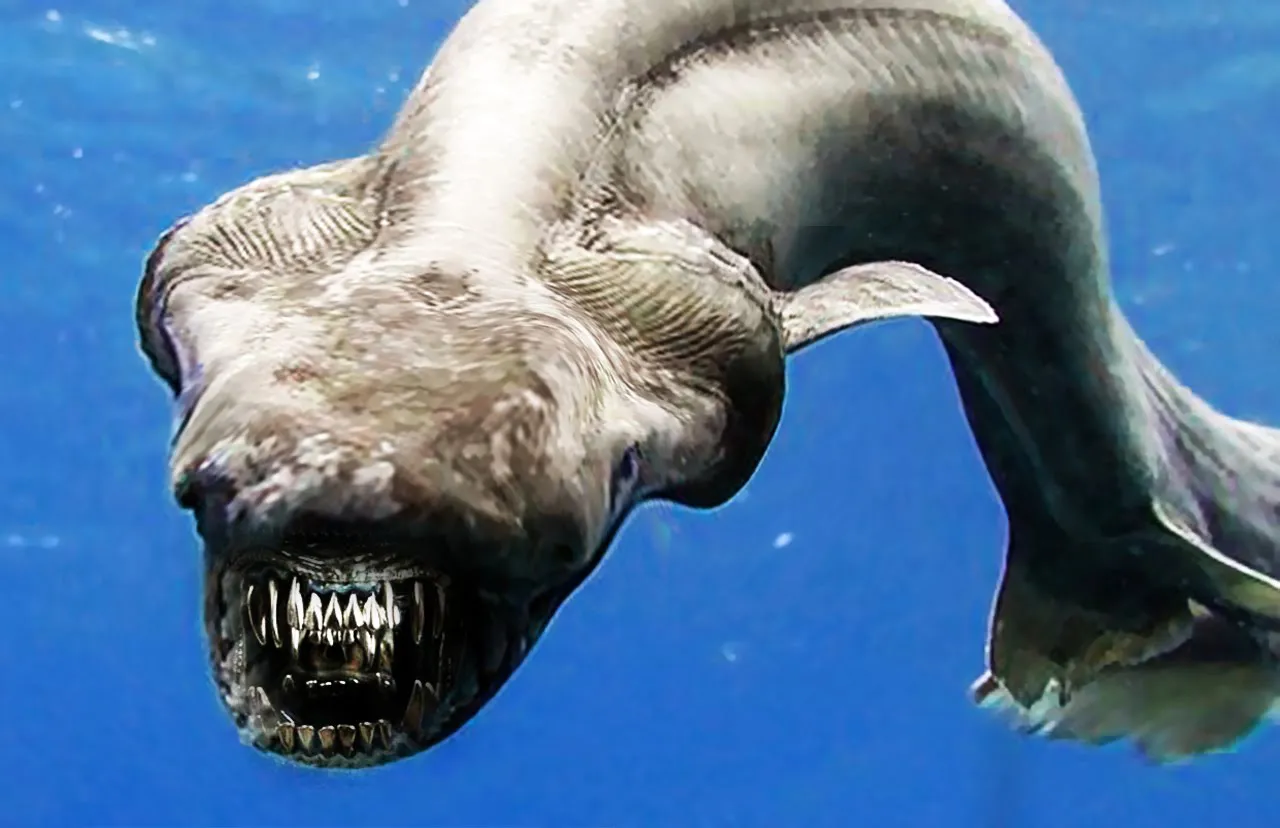
We’ve already looked at some of the most astonishing extinct species of shark over here, now let’s look at some you can still find in our oceans.
There are over 470 species of shark swimming in Earth’s oceans, but we tend to focus most of our attention on about five of them. Here’s some of the coolest, lesser known sharks we’ve heard of.
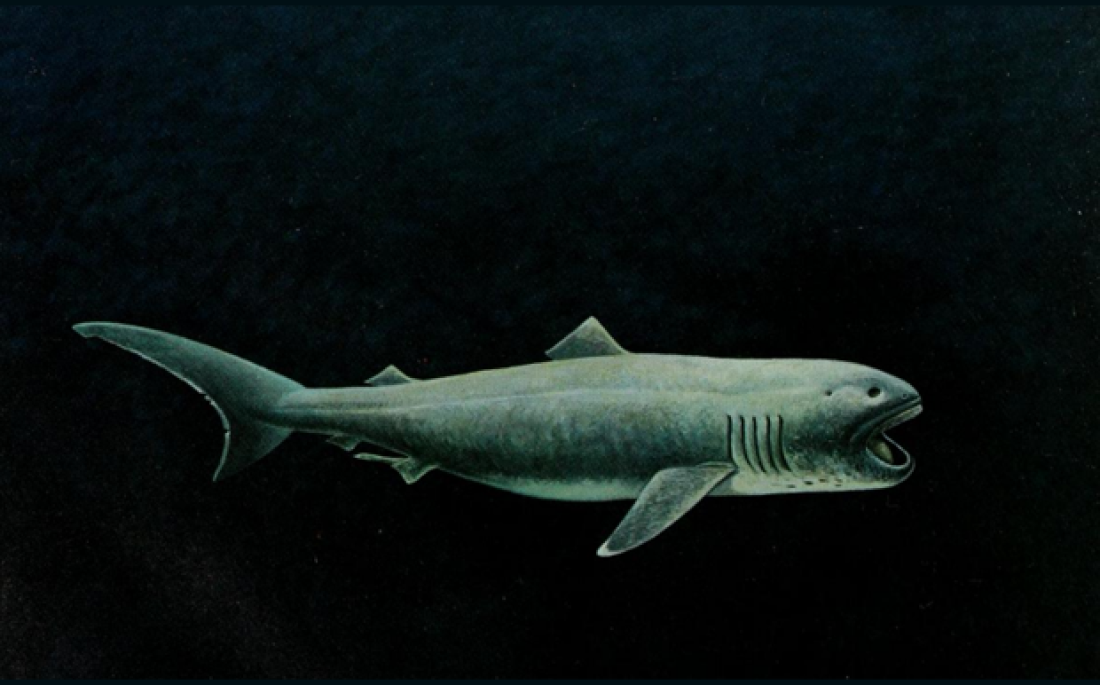
1. Megamouth shark
The name is pretty descriptive and gives us a good idea about this shark’s unique feature. The megamouth has a massive mouth, with thick rubbery lips that gives it an appearance unlike any other shark out there. In fact, it is so unique that it is classified in its own distinct family. It is part of the select group of planktivorous sharks that feeds mostly on plankton. Like its fellow members, the whale shark and basking shark, it is a filter-feeder.
In terms of size the megamouth gets pretty big like, but it’s still small compared to the other two species of filter-feeding shark. They grow around 13-16 ft (4-5 m) and weigh around 2,600 lb (1,200 kg). There isn’t much else to say about them because unfortunately, we know very little about them. They were only discovered around 40 years ago by chance and, since then, we’ve encountered less than 60 specimens.
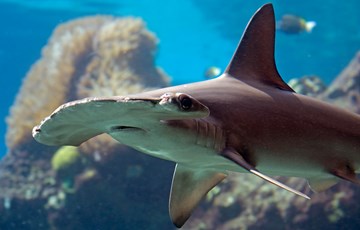
2. Hammerhead shark
The hammerhead shark is quite well-known, but this doesn’t detract from the fact that it is definitely one of the weirdest groups of sharks (there are actually 11 species of hammerhead). Again, its name is pretty suggestive and it refers to the incredibly bizarre shape of the shark’s head. It’s been debated for a long time why they have evolved to have that unique hammer-like shape and it is generally agreed that it gives them improved vision. Hammerhead sharks are capable of seeing what is below and above them at the same time, so the weird shape of their head gives them 360 degree vision. The great hammerhead, the biggest species of the group, grows to a length of 15 ft (4.5 m) and weigh up to 1,300 lb (600 kg).
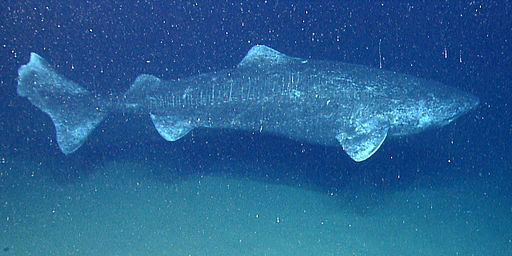
3. Greenland shark
Typically, we think of sharks of lightning-quick predators who attack in the blink of an eye. That is not the case with the Greenland shark. This guy swims around at a cruising speed of 1 mph (1.6 kmh) or slower and when he gets the need for speed he can get up to a blistering 1.6 mph (2 kmh). He is part of the family Somniosidae, also known as sleeper sharks, which are characterized by their slow movements. However, even for that group, the Greenland shark is a slowpoke as he is considered to be the slowest shark in the world.
These sharks are found in the cold, deep waters surrounding Canada, Iceland and Greenland and we have very little information about them. From the few specimens we have caught, we see that the shark is big and can grow to sizes comparable to the great white. One mystery we still haven’t solved is how this guy feeds. Stomach contents that we analyzed included seals and eels and other animals much faster than it, so we still don’t know how it captures its prey.
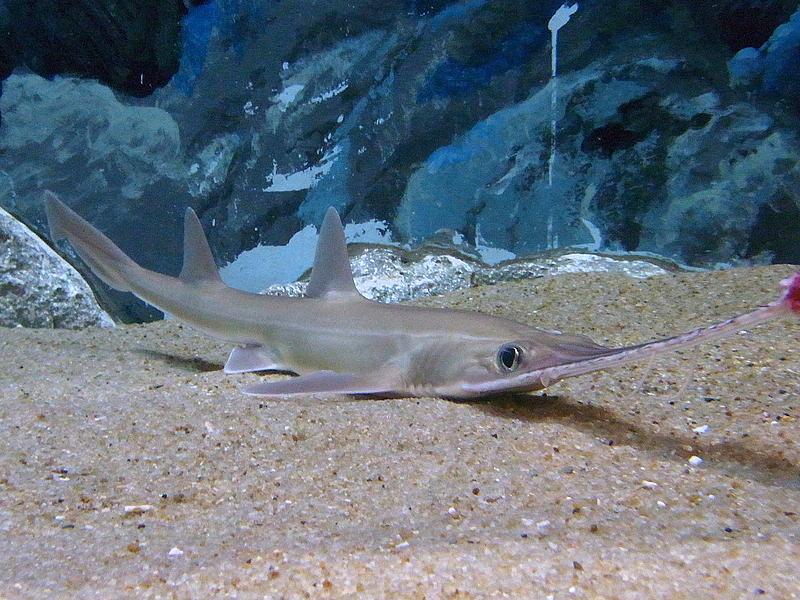
4. Sawshark
Like the hammerhead, the sawshark is actually a group which is comprised out of several species of shark that share a very distinct appendage – an elongated snout with teeth on the sides that they use like a blade in order to capture and kill prey.
The sawshark often gets confused with the sawfish because the two are very similar and both groups have the saw-like snout. However, there are a few key differences since the sawshark is genuinely a shark while the sawfish, although it looks very much like a shark, is actually a ray. First of all – size. The sawshark is actually much smaller than the ray. The shark gets up to a size of 5.5 ft (1.7 m) while the sawfish can grow up to 23 ft (7 m). Another difference is the snout – the sawshark has barbels on it (long, whisker-like antennae) while the sawfish doesn’t. Finally, like most sharks, the sawshark has its gill openings on the sides while the ray has them on its underside.
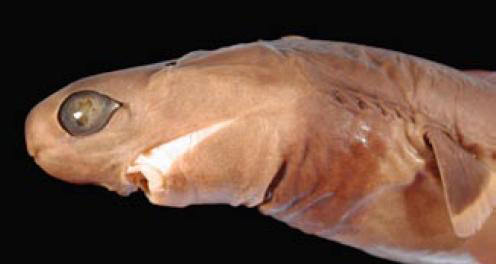
5. Cookiecutter shark
The cookiecutter shark has a silly name and a diminutive stature of 20 inches (50 cm). Despite this, he is one vicious predator you would not want to mess with. This is because it preys on just about every large and medium-sized creature it shares an ocean with: whales, sharks, dolphins, seals, rays, dugongs etc. The way it does this is by latching on to a host through suction. Afterwards it sinks its teeth into the prey with the upper row acting like an anchor while the lower teeth begin munching away. Then the shark begins twisting so that, in the end, it gouges out a round chunk of flesh, hence the name cookiecutter. Besides its parasitic feeding strategy, the cookiecutter shark has a bizarre cigar-shaped body and it is also extremely bioluminescent in order to convince its prey to come to it.
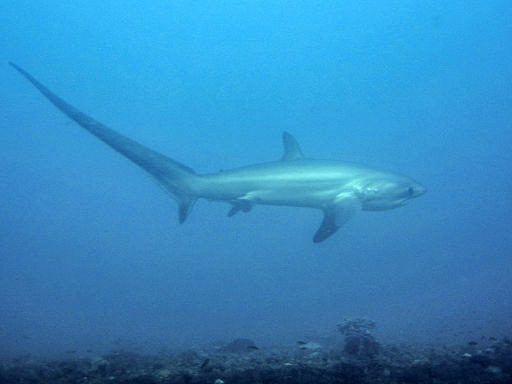
6. Thresher Shark
The thresher shark looks pretty normal apart from its absolutely massive tail. Depending on the species, the tail can get to be half its total length which can be up to 20 ft (6 m) in the case of the common thresher shark, the largest species in the group. The smallest one is the pelagic thresher that only grows to 10 ft (3 m). The primary use of the tail is for catching prey. The shark would weave through schools of fish and snap its tail as it goes. Afterwards, it would turn around and catch the fish that have been stunned by the tail.
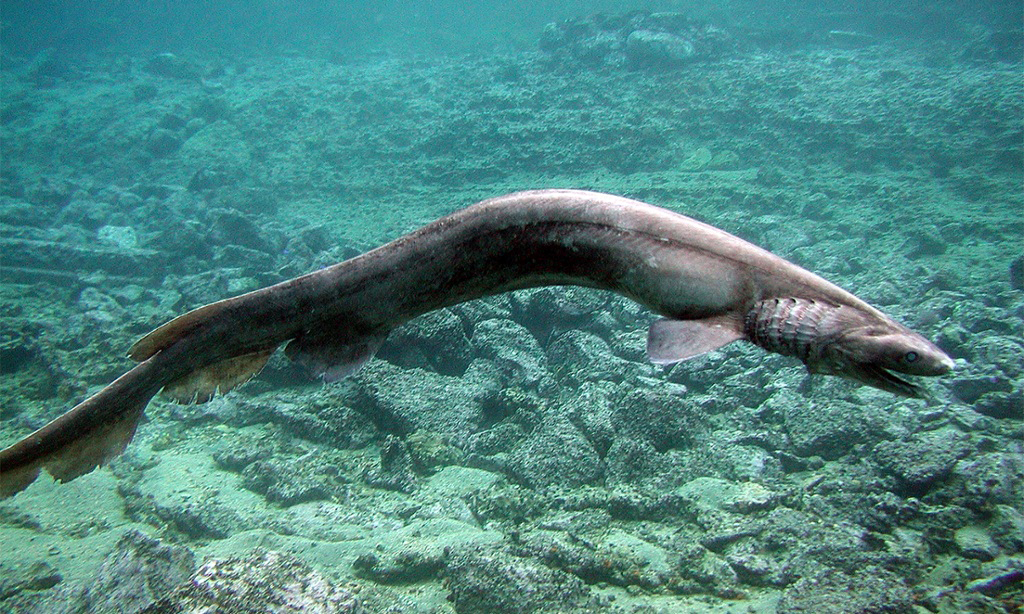
7. Frilled shark
With looks taken straights out of a horror movie, the frilled shark is much more reminiscent of an eel or a snake thanks to a long, thin body. It has a very primitive look, which is why it has long been considered a “living fossil”, an extant species which closely resembles extinct species known only from fossils. However, the frilled shark itself is a relatively new species. The oldest fossil teeth we’ve found were dated to the beginning of the Pleistocene era, 2.5 million years ago.
The name is derived from its six pairs of gill slits which are long and frilly. It is highly unlikely that you will find one of these guys as they are extremely rare and prefer to live in the deep ocean. Those that have been found have had a maximum length of 6.6 ft (2 m).
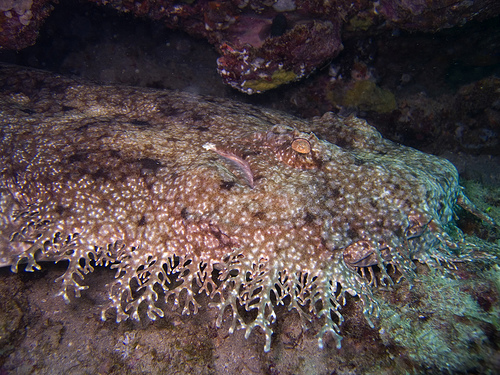
8. Wobbegong Shark
The wobbegong shark is actually a group of carpet sharks comprised of 12 individual species. The name “carpet sharks” refers to an order of shark with colorful, ornate patterns on their back which can be reminiscent of a carpet. In the case of wobbegongs, the patterns are not meant to help them stand out or to attract prey, but rather to camouflage. Wobbegong sharks have a feeding tactic which is actually quite unusual for sharks: they lie in wait at the bottom of the ocean and snatch up any prey that comes too close. Completing the camouflage is a series of lobes attached around the mouth of the shark which resemble weeds and help lure fish. They can grow up to 10 ft (3 m) in length, although most species measure less than half that.
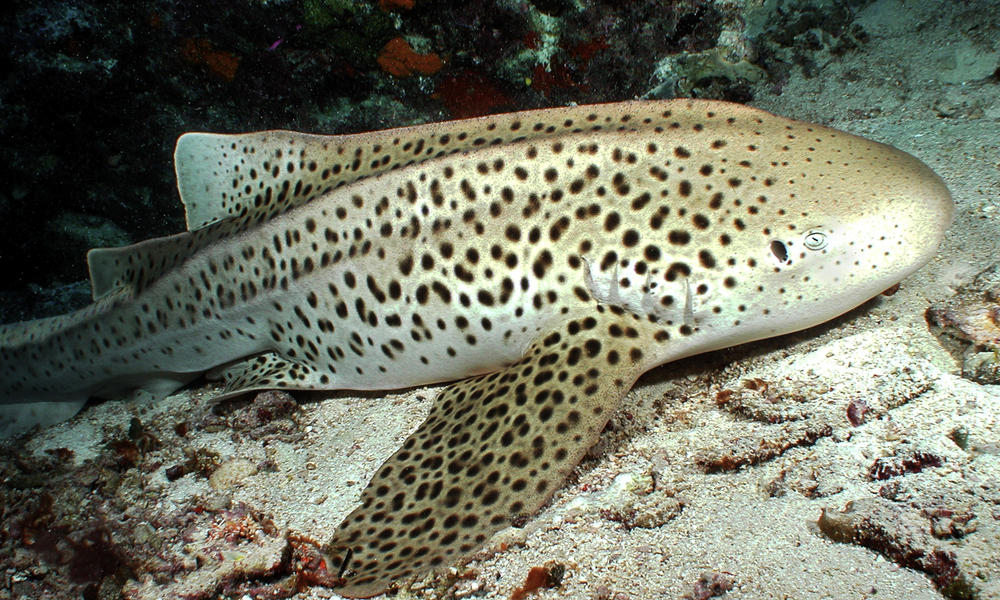
9. Zebra shark
The zebra shark is another species of carpet shark who has unique patterns on the top of its body and, with a name like that, you would think that those patterns would be pretty obvious. However, you would be wrong because the zebra shark actually has small, dark spots on a pale background. It also has five quite obvious ridges going down the length of its body. Surely, with a pattern like that, a more fitting name for it would be the leopard shark and, indeed, it is actually called that in certain places of the world. To make things even more confusing, there is actually another species of shark which is called leopard shark and it is completely unrelated.
So why “zebra shark”? Well, because the name is actually more fitting for the young pups who look completely different from the adults. They have white vertical stripes on a dark brown background and lack the ridges. The adults can grow up to 8 ft (2.5 m) but they remain quite popular with divers because they are very docile and will allow humans to get very close without attacking or running away.
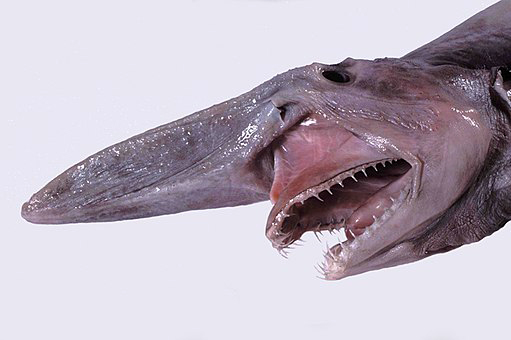
10. Goblin shark
The goblin shark is definitely not a looker. Luckily for it, the goblin shark doesn’t need to look pretty since it’s a bottom-dweller found in the ocean depths. From the beginning, the most distinctive feature is its long protruding blade-like snout. The size of the snout will actually get smaller as the shark ages. It also has a pink body which is pretty unusual but, by far, the most bizarre aspect of this shark is its jaw – it has a protrusible jaw with sharp teeth which can be extended outwards in order to catch prey. Think of the xenomorph in “Alien” and you’re pretty close.
The average size of a goblin shark is between 10 and 13 ft (3 and 4 m) and we don’t really know much else about it. Like many other species of shark on this list, the goblin shark remains a mystery because it is hard to study. Although research suggests that it is not a particularly rare creature, the goblin shark lives mostly in areas which are untouched by man, so it is difficult to track it for long periods of time.
To read the original article, go here:
http://www.iflscience.com/plants-and-animals/10-weirdest-species-shark/

NORTH SHORE SHARK ADVENTURES
Haleiwa Harbor
66-105 Haleiwa Rd
Haleiwa, HI 96712
Call 808.228.5900
